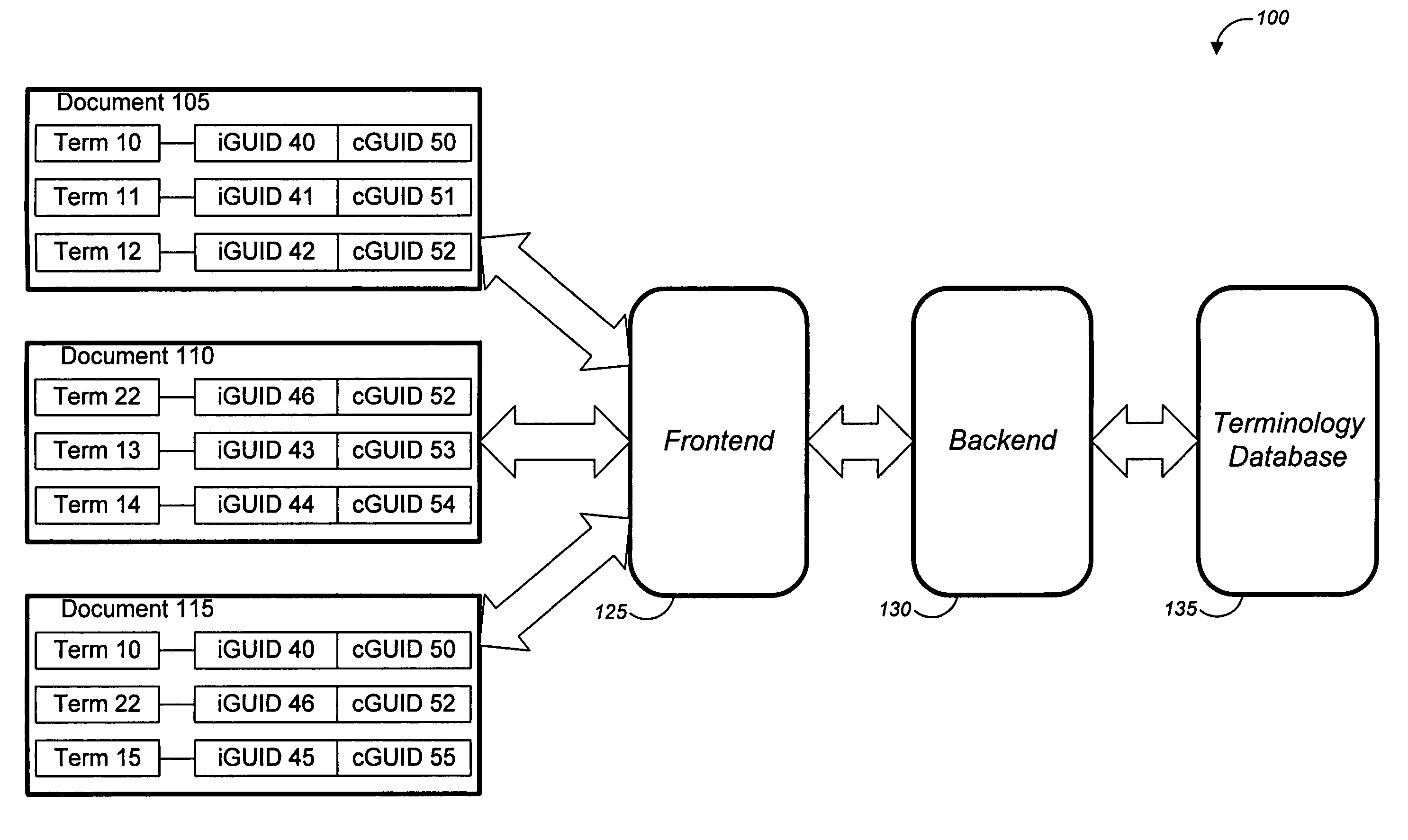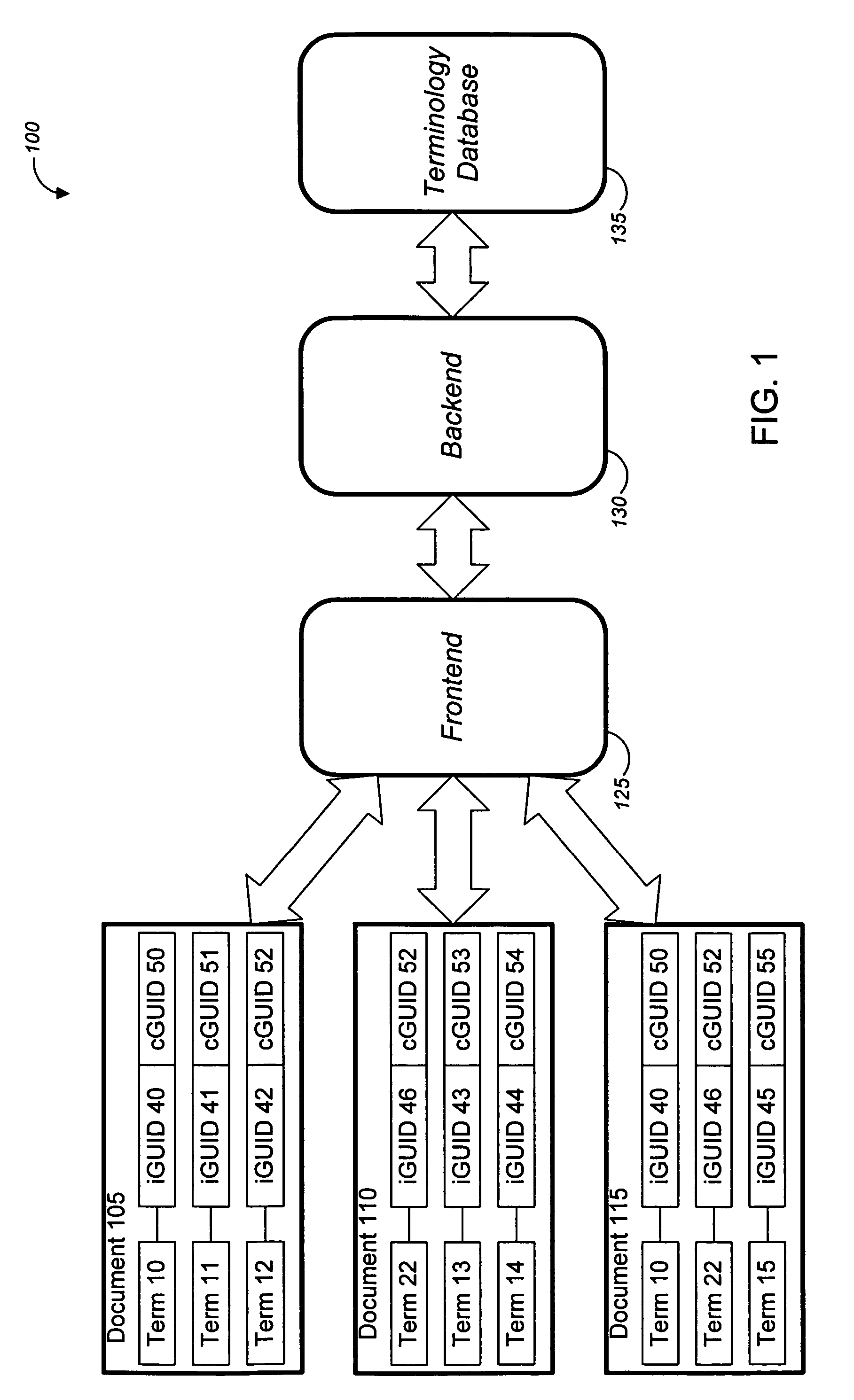Concept-based content architecture
a content architecture and concept technology, applied in the field of information management, can solve problems such as system cumbersomeness
- Summary
- Abstract
- Description
- Claims
- Application Information
AI Technical Summary
Benefits of technology
Problems solved by technology
Method used
Image
Examples
Embodiment Construction
[0017]FIG. 1 shows a concept-based content architecture system 100 that associates unique identifiers with data elements in data sets. The content architecture system contains a frontend system 125, a backend system 130, and a terminology repository or database 135.
[0018]In one implementation, the frontend system 125 can be the Knowledge Workbench from SAP AG of Walldorf (Baden), Germany (SAP). The backend system 130 can be the Knowledge Warehouse, also from SAP, and the terminology database 135 can be SAPTerm. The Knowledge Warehouse is a tool that supports various activities related to the creation of software manuals.
[0019]A user can access the system 100 by using the frontend system 125. Through the frontend system 125, the user has access to a number of data sets that are contained within the system. A data set is a collection of units of content. Data sets can include text documents, data files, database entries, or any other type of resources that can be stored and accessed t...
PUM
 Login to View More
Login to View More Abstract
Description
Claims
Application Information
 Login to View More
Login to View More - R&D
- Intellectual Property
- Life Sciences
- Materials
- Tech Scout
- Unparalleled Data Quality
- Higher Quality Content
- 60% Fewer Hallucinations
Browse by: Latest US Patents, China's latest patents, Technical Efficacy Thesaurus, Application Domain, Technology Topic, Popular Technical Reports.
© 2025 PatSnap. All rights reserved.Legal|Privacy policy|Modern Slavery Act Transparency Statement|Sitemap|About US| Contact US: help@patsnap.com



